Lean Expert / Six Sigma Yellow Belt is a 40-hour program that provides an overview of Lean Six Sigma techniques, indicators, and basic improvement methodologies. A Yellow Belt participates as a core team member or subject matter expert (SME) on a project or projects. The training offers an introduction to the management process, basic Six Sigma tools and advanced Lean tools, giving participants a greater understanding of the processes, allowing each individual to offer significant assistance in achieving the overall objectives. of the organization.
This training seeks to improve:
- The effectiveness of employees in their role in supporting Lean Six Sigma and Continuous Improvement.
- Staff involvement in Lean Six Sigma and the Operational Excellence program.
- Optimization of day-to-day work activities (resulting in reduced cycle times, improved quality, and generating less waste)
Offer organizations the training of their professionals in Six Sigma, through training and coaching in a course that updates their knowledge and develops the necessary skills in the participant, with a depth degree of 40 hours of training known as Yellow Belt/Lean Expert, to apply the strategy, principles, methodology and tools of Lean Six Sigma in an improvement project previously defined and approved by a senior manager in your organization, thus helping senior management to deploy the strategy of the methodology.
Likewise, it seeks to develop the theoretical, conceptual and methodological framework for the understanding of the principles and strategic elements in the definition of projects and the rigorous application of the Six Sigma strategy in an organization.
As a specific objective, the skills required to manage the techniques and tools that make up the body of knowledge developed in Six Sigma are generated, providing the participants with the DMAIC process improvement methodology, supported by Minitab, a specialized computer program for such purposes. and developing their skills as leaders of Six Sigma work teams.
This Yellow Belt training program is aimed at the technical staff of all industrial companies, who have knowledge about the operation of the areas where the problems are occurring. Also for those interested in acquiring knowledge and experience in the basic tools of Six Sigma.
It is a theoretical-practical course because in addition to the theoretical study sessions, the pragmatic use of the methodology is taught, supported by statistical software, and the participant is accompanied in the stage of applying knowledge in a specific improvement project.
It is a theoretical-practical course because in addition to the theoretical study sessions, the pragmatic use of the methodology is taught and the participant is accompanied in the stage of applying knowledge in specific examples and specific improvement projects.
The selected candidates will be trained as Kaizen Leaders to lead and participate in the execution of the selected projects as part of their learning process.
As part of the development of the course it is sought:
- Advise the groups in the identification and selection of potential projects to be worked under the methodology and tools of continuous improvement and resolution of selected problems.
- Help identify and inventory potential projects.
- Advise and guide the financial team in the preliminary quantification of the potential savings that these projects can generate.
- Make the choice of projects that are viable and that will be executed with the guidance and accompaniment of the consultant.
During the Six Sigma program, each participant must develop a project with a goal that must be achieved in a maximum period of six months. The goals should be measured by the number of times the investment returns. On average, Yellow Belt projects in Six Sigma have a return of 3 to 5 times the value invested. The participant must attend a one-week theoretical training session. At the end of the week of classes, he returns to his Organization to apply the acquired knowledge to his project and to hold a Kaizen Event.
- Induction
- The Six Sigma Vision
- Lean – Values and Foundations
- Lean and Six Sigma Integration
- The 8 waste
- Goal – Eliminate defects to reduce costs
- Selection of key projects
- DMAIC – Project Life Cycle
- Customer requirements (VOC)
- Quality Function Deployment (QFD)
- Project Charter – Problem Definition and Objectives
- Process Mapping (SIPOC)
- Stream Mapping (VSM)
- Project feasibility matrix
- Risk review
- Introduction to Minitab
- Presentation format
- Data collection plan
- Introduction to the Rolled Through-put Yield variation
- Basic statistics
- Probability graph
- Processing capacity
- Calculating Sigma / Z Bench
- Starting Requirements (Baseline)
- Graphic tools
- Pareto chart
- Histogram Control Charts – Continuous Data
- Control Charts – Discrete Data
- box plot
- Dispersion diagram
- Fitted line graph
- Solution selection
- Failure Mode and Effect Analysis (FMEA)
- Lean and Six Sigma methods
- The 5 S
- Standard operating instructions
- Poka Yoke
- Pull systems
- SMED
- Standard work
- Kaisen Events
- Cost benefit analysis
- Sample size
- Control plans
- Comparison of process capacity
- instructors

- Systems Engineer from the University of Massachusetts - Lowell with specializations in Process Engineering and Robotics.
- Postgraduate degree in Information Technology Administration from the University of Phoenix.
- Six Sigma Black Belt certified by Sunbeam Jarden Consumer Solutions company in 2005 with recertification in 2006, 2007 and 2008.
- Certified in Advanced Problem Solving and Root Cause Analysis/FMEA by Worcester Polytechnic Institute.
- SQA/ORT Quality Auditor in Asia and Latin America.
- Synergy Technology Solutions Associate Instructor for Six Sigma and Lean Manufacturing.
- Member of the Colombian Society of Six Sigma (Acosixsigma) of which he is an active contributor to the Tools and Tactics section of the members' area.
- He currently serves as president of the same organization.

- Specialist in Project Management from the National Open and Distance University.
- Industrial Engineer from the Technological University of Pereira.
- Certified Scrum Master, International Six Sigma Black Belt certification and Master Black Belt from Six Sigma Global Registry.
- Yellow Belt Instructor, Green Belt, Black Belt and Master Black Belt for Acosixsigma.
- Responsible for the implementation of performance management models, design of strategic maps, application of Kaizen accelerated improvement events and analysis of production processes in fundamental practices.
- Experience with more than 200 Belts trained in Colombia and Latin America. He has actively participated in the implementation of more than 100 projects with savings of more than 300 million dollars since 2014.
- He currently works as Project Coordinator and Senior Consultant at the Colombian Society of Six Sigma – Acosixsigma.
Information request
Latin America
USA and Europe

Investment value
- Intensity: 40 Hours.
- Teaching materials
- 1 year membership in SigmaNet for support materials, seminars, forums, free seminars and discounts on Six Sigma and Operational Excellence activities.
- Virtual monitoring (via email, Skype and teleconference) of certification projects for 6 months once the in-person training is completed.
- Attendance certificate
- International Certification Plate once the project is successfully completed.
- Minitab Temporary License
- Templates programmed in Excel for Lean Six Sigma tools
- Memories of the presentations.
Leave us your data to advise you!
FAQ
According to the Body of Knowledge (BOK) of the American Society for Quality (ASQ) and the international certification programs recognized by Motorola University and the International Society for Six Sigma Certifications, the minimum hour number of the Six Sigma program is: There are a number of Six Sigma programs that are widely marketed and apply only a fraction of the BOK for each level. Acosixsigma is recognized for the large amount of curricular content that applies to all types of industry. For example, the estimated time for a Black Belt certification course is 120 hours, not including additional time allocated to a Six Sigma project. Other providers offer Black Belt training courses totaling 90 hours and Green Belt courses advertised at 56 hours. Therefore the variability in class hours obviously serves as a warning for interested companies to carefully check the subjects when taking a particular course against the established criteria for certification.
A Lean/Kaizen/Blitz Event is an intense effort where the team applies specific Lean approaches to reduce waste, defects, and cycle time and to implement improvements in a particular process or department.
Lean Six Sigma is an integrated set of methodologies that encompasses both Lean and Six Sigma concepts. It combines two powerful toolsets to address all aspects of quality, cost, and delivery. Both sets of methodologies have a customer and quality focus and are based on continuous improvement, which allows them to be very complementary.
Lean focuses on offering competitively priced products and services by eliminating waste and its drivers, while Six Sigma focuses on minimizing and reducing process variation that causes nonconformities.
Lean Six Sigma combines the strength and rigor of Six Sigma and data-driven analysis with the simple tools of Lean to eliminate waste and its drivers. The combination of the two methods provides a more robust set of tools for organizations to apply to solve problems, using the tools and techniques that best suit the specific problem at hand. Rather than the traditional independent use of tools, Lean Six Sigma combines Lean approaches into Six Sigma through the DMAIC (Define, Measure, Analyze, Improve and Control) method, as well as allowing Lean approaches to be used on their own. in the DMAIC model.
Process improvement is necessary for the performance of an organization that does not meet customer requirements. Lean Six Sigma offers a comprehensive set of tools, techniques, and approaches to enable an organization to gather customer requirements, analyze existing performance against those requirements, implement solutions to address performance gaps, and maintain best-in-class status. The tools and techniques used are the most appropriate for the specific problem at hand.

